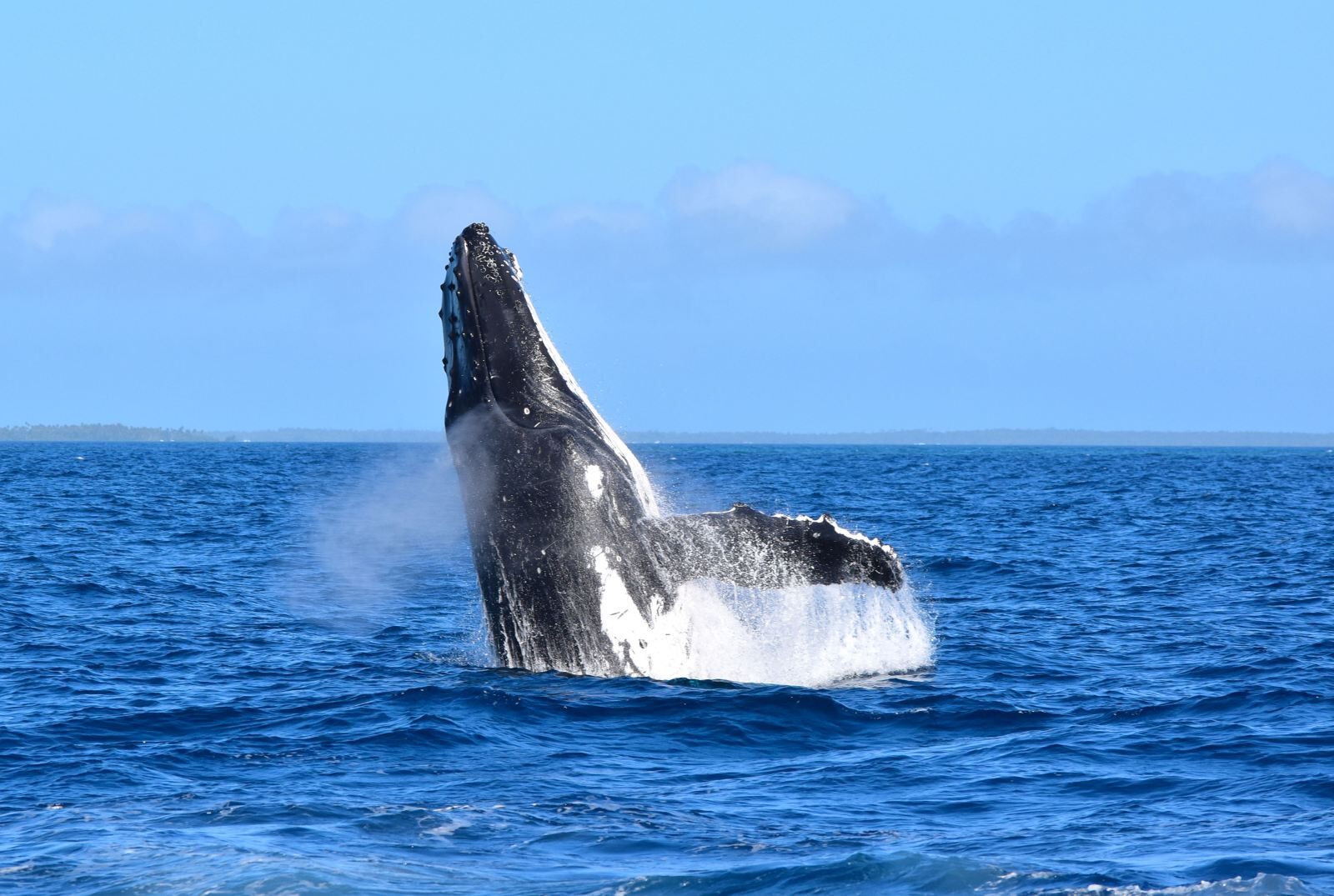When to Swim with Whales in Tonga
Humpback whales are not in Tonga’s waters all year round. They migrate from Antarctica each year, arriving in Tonga between June and July to mate and calve. They then leave Tonga back for Antarctic waters around October and November, depending on the island group. Because, yes, each island group in Tonga has slightly different whale seasons. We’ll go through them all in this guide to the whale season in Tonga.
While you’re here, don’t forget to bookmark our complete bible on whale watching; The Guide to Whale Swimming in Tonga.
When is the Whale Season in Tonga?
Humpback whales frequent Tonga’s waters between July and October each year. August and September are the best months to have a whale encounter through whale swimming tours and watching whales from shore. Although whales can be seen in Tonga’s waters as early as June and as late as November, the fringes of the whale season tend to be disappointing for whale encounters, so it’s highly recommended that you book whale tours anytime between July to October.
For more seasonal activities, take a look at The Best Time to Visit Tonga.
The Whale Season in Each Island Group
While the consensus for the whale season in Tonga is that it lasts from July to October, this isn’t exactly true for every island group. It’s best to find out the whale season for the island group you are visiting to avoid disappointment. They are as follows:
- The whale season in Tongatapu: mid-June to the end of October
- The whale season in ‘Eua: early June to early November
- The whale season in Ha’apai: mid-July to mid-October
- The whale season in Vava’u: mid-July to mid-October.
For more about picking a destination to see or swim with whales, check out The Best Place to Swim with Whales in Tonga and the 10 Best Places to See Whales in Tonga From Shore.
The Best Time to Swim with Whales
Now that you know the whale season in Tonga, when is the best time to swim with whales in Tonga? Our 10 Photos That Will Make You Want to Swim with Whales in Tonga Now gives a good insight into how whale behaviours change throughout the season, with some behaviours toward the end of the season making for better whale swimming than those during the beginning.
The Best Months to Swim with Whale Calves
Early into the whale season, say June and July, whale mothers tend to be more apprehensive about approaching boats while their calves are still newborn, so are more likely to swim away. In contrast, later into the whale season, in September and October, calves are older and more inquisitive about swimmers, while mothers are more relaxed, which tends to result in better swims.
The Best Time to Watch Whales From Shore
Throughout the season, excitable juveniles playing together and performing “heat runs” are seen in Tonga’s waters, typically with behaviours such as breaching from the water, as well as fin and fluke slaps. This type of behaviour can be observed at any time during the whale season. You’ll just need to be at the right place at the right time to experience this type of encounter.
For tips like this, head over to the 10 Tips for Swimming with Whales in Tonga.
More About the Whale Season in Tonga and the Best Months
That’s it for our guide to the whale season in Tonga and when are the best months to see whales. For more blowhole babble, check out the following guides:
- 10 Tips for Swimming with Whales in Tonga
- 10 Best Whale Swim Tours in Tonga
- Is it Safe to Swim with Whales in Tonga?
Finally, if there’s anything we’ve missed, you’re likely to find it in The Guide to Whale Swimming in Tonga.
Author
Laura (Lola) S.
This article was reviewed and published by Laura, editor in chief and co-founder of Tonga Pocket Guide. Since arriving solo in the South Pacific over 10 years ago with nothing but a backpack and a background in journalism, her mission has been to show the world how easy (and awesome) it is to explore a paradise such as Tonga. She knows the islands inside-out and loves sharing tips on how best to experience Tonga’s must-dos and hidden gems. Laura is also editor of several other South Pacific travel guides.

